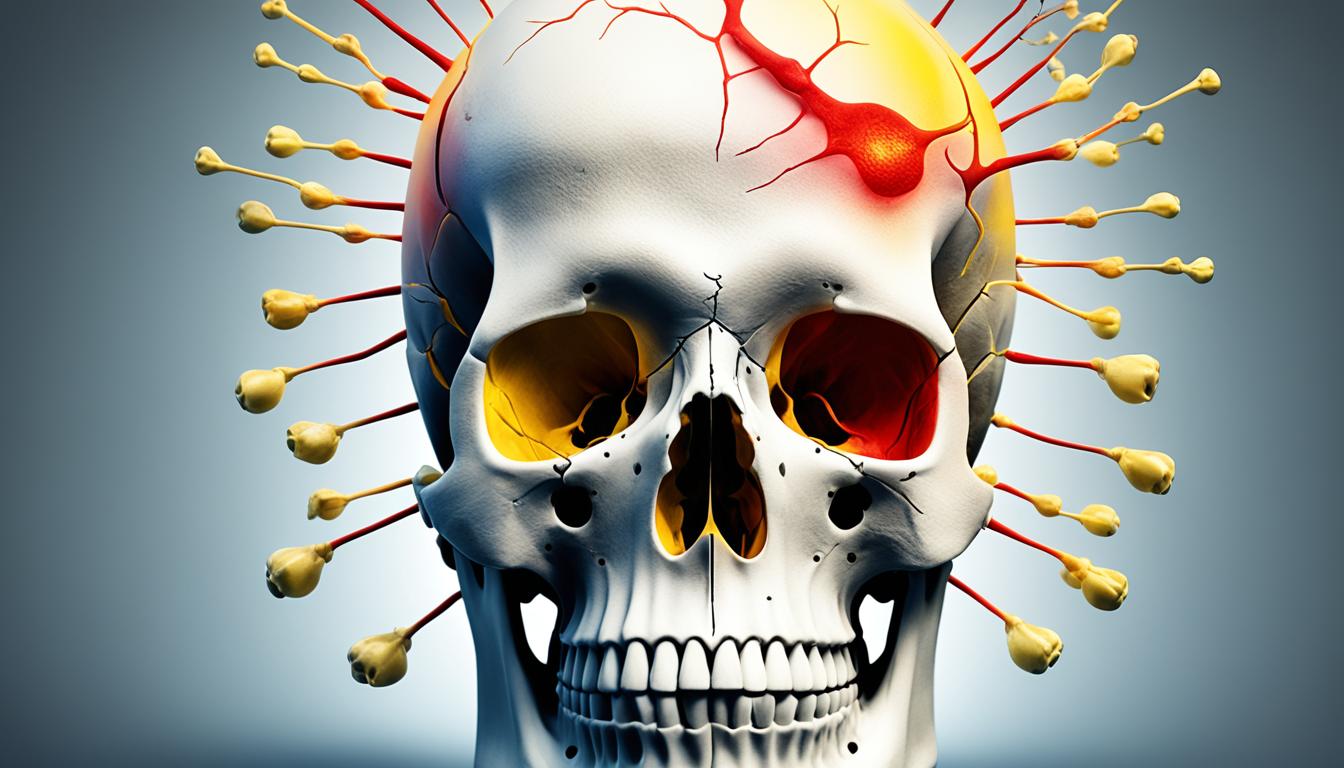Craniosynostosis is a major problem at birth. It causes the bones of a baby’s skull to join together too soon. About 1 in 2100 to 1 in 2500 babies in the United States have this. It may affect their hearing, eyesight, brain pressure, and how well they think.
The main causes are gene changes, problems with chromosomes, or bad things in the environment. It can happen by itself or with other medical conditions. Doctors often find it in the baby’s first few months with a checkup.
Surgery is usually the best way to fix craniosynostosis. But, it can cause problems, and the issue might come back. Now, there’s new hope with stem cell treatment. This might be a better way to help kids with this disease.
Key Takeaways
- Craniosynostosis is a congenital disorder where a baby’s skull bones close too early.
- It can lead to problems like trouble hearing or seeing, high brain pressure, and learning difficulties.
- It might happen due to changes in genes, issues with chromosomes, or things in the environment.
- Doctors often confirm it by looking at the baby and doing some tests in the early months.
- Stem cell therapy is a new hope for treating craniosynostosis more effectively.
Craniosynostosis Types and Complications
Craniosynostosis means some skull sutures close too early. This happens in different ways:
- Sagittal craniosynostosis: The sagittal suture, top to back of the head, closes too soon. It is most seen, up to 55% of cases.
- Coronal craniosynostosis: Sideways sutures merge early in this type. It makes 20-25% of cases.
- Metopic craniosynostosis: The metopic suture, down the center of the forehead, closes early. This is about 4-10% of cases.
- Lambdoid craniosynostosis: At the back of the head, the lambdoid sutures close prematurely. It is rare, in only 2-4% of cases.
Each type shows unique symptoms. Correction can vary by type. Some cases need more surgery than others.
Also, craniosynostosis can bring other health issues. For example:
- Increased intracranial pressure: The tight skull can press on the brain. This causes problems like headaches, vomiting, and vision changes.
- Neurological deficits: Brain pressure may lead to learning delays, thinking problems, and physical issues.
- Respiratory difficulties: A strange skull shape might affect breathing, causing sleep apnea.
- Psychosocial impact: The looks can affect how a child feels about themselves and interacts with others.
The main solution is surgery. Yet, it’s risky. Too much blood loss or needing more surgery are real risks, especially in syndromic cases.
| Craniosynostosis Type | Prevalence |
|---|---|
| Sagittal craniosynostosis | 40-55% |
| Coronal craniosynostosis | 20-25% |
| Metopic craniosynostosis | 4-10% |
| Lambdoid craniosynostosis | 2-4% |
Advancements in Stem Cell Therapy for Craniosynostosis
Stem cell therapy is showing great promise for treating craniosynostosis. Researchers believe mesenchymal stem cells (MSCs) can help fix cranial sutures. This could make craniosynostosis surgery outcomes better. Tests on animals have taught us a lot. They’ve shown that after birth, MSCs near sutures play a big part in craniosynostosis.
This new way of using mesenchymal stem cells to fix sutures might make surgery less needed. But, we need more studies to make stem cell therapy better and safer for people. The goal is to find a way to treat craniosynostosis that is gentle but works well. These efforts could really change lives for those with craniosynostosis.
Our knowledge about stem cells is growing fast. So is our technology. This is opening up more ways to treat craniosynostosis. Scientists are working hard to make stem cell therapy a key part of helping people with this condition.

